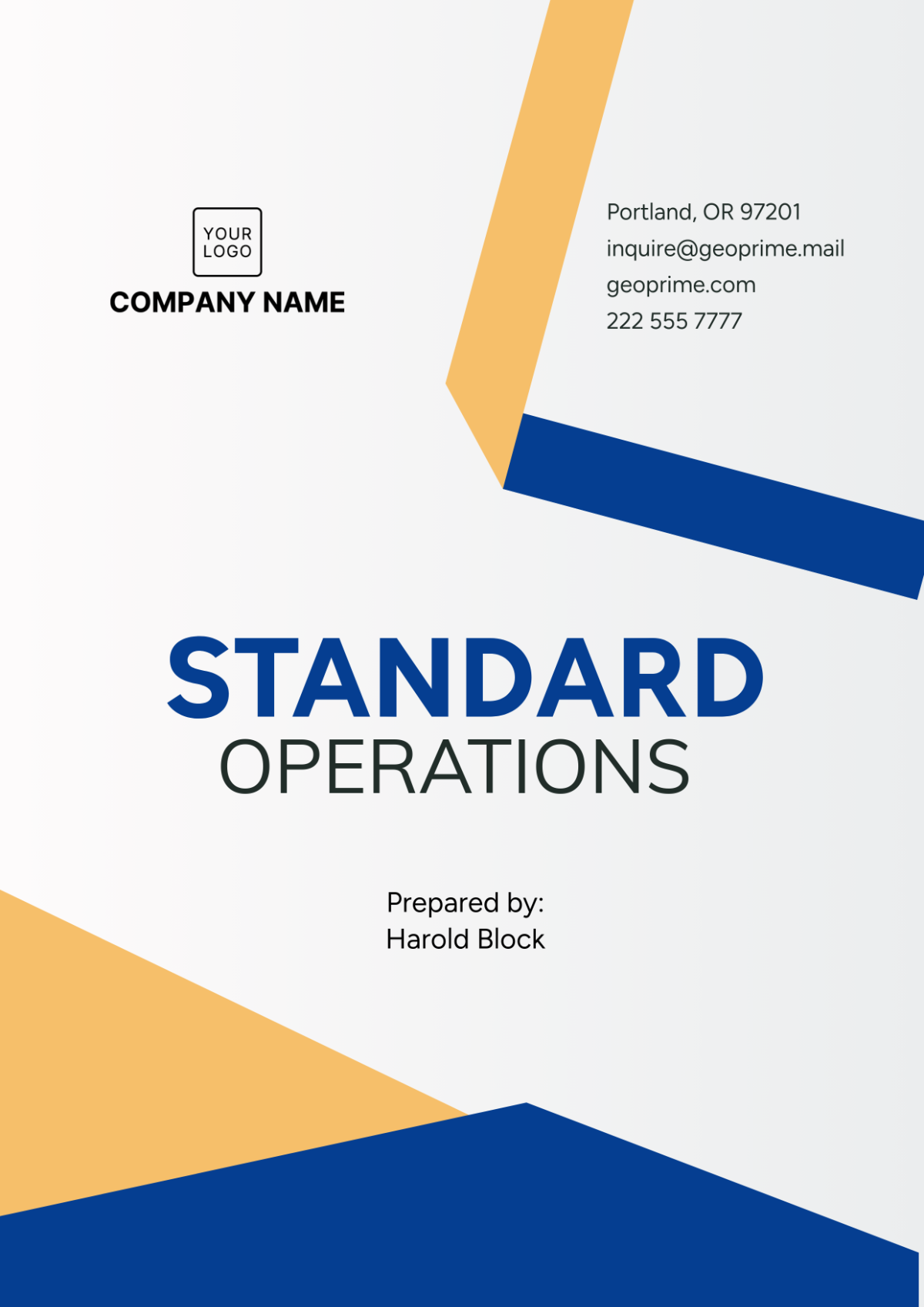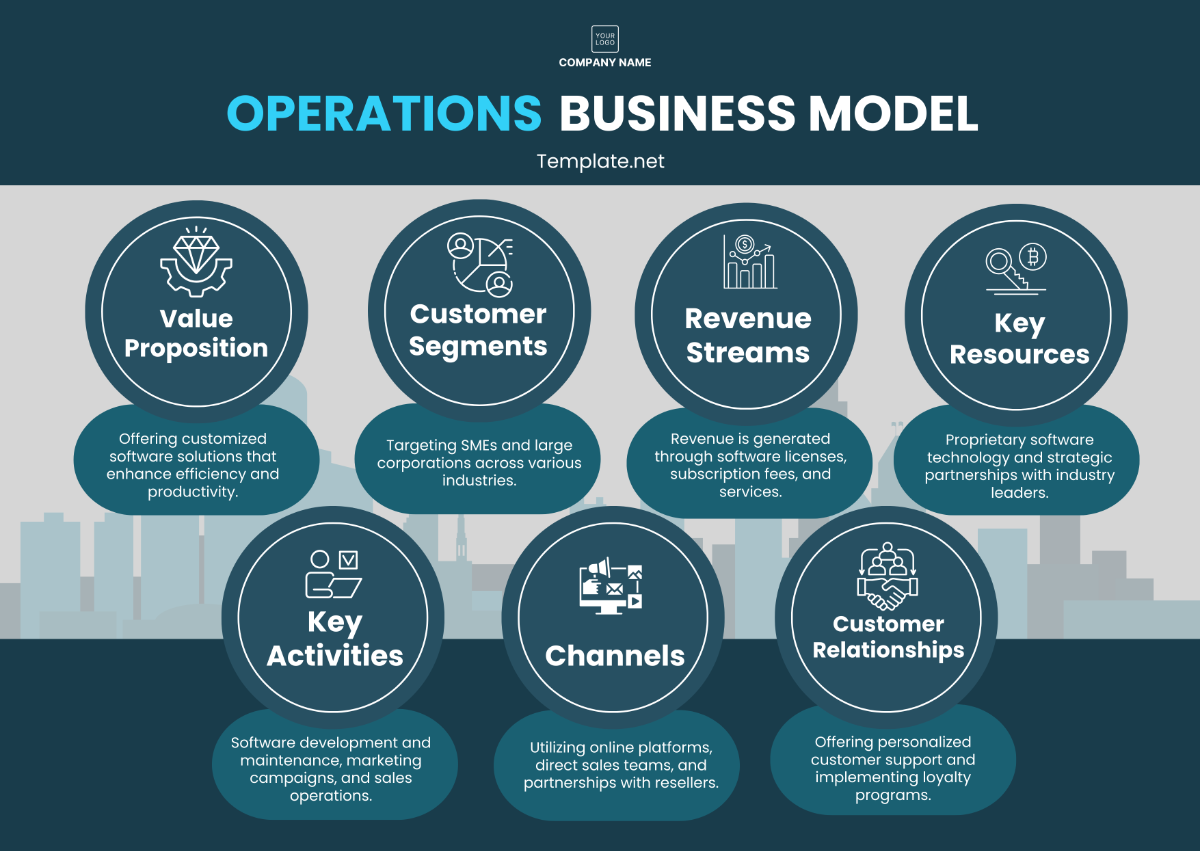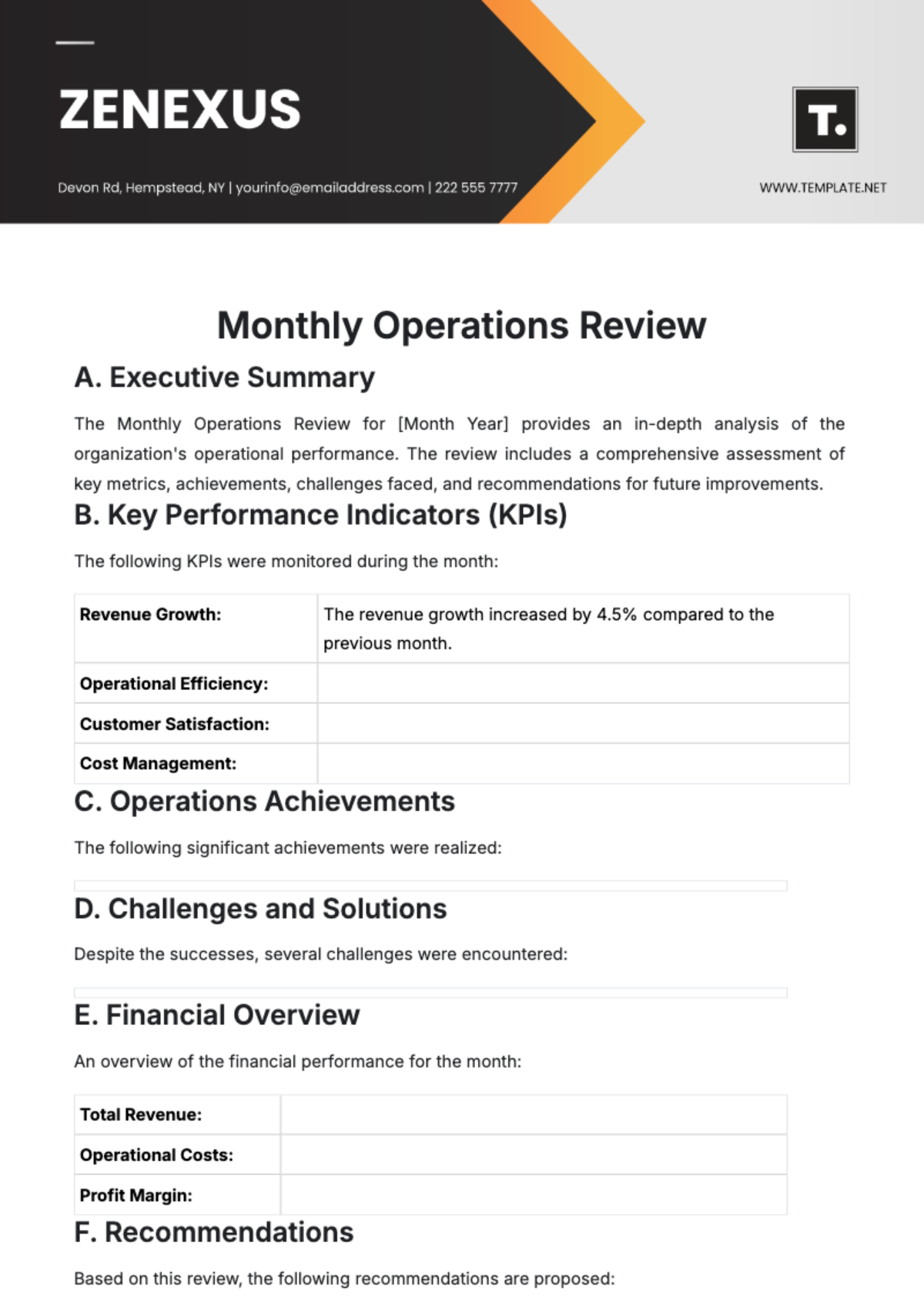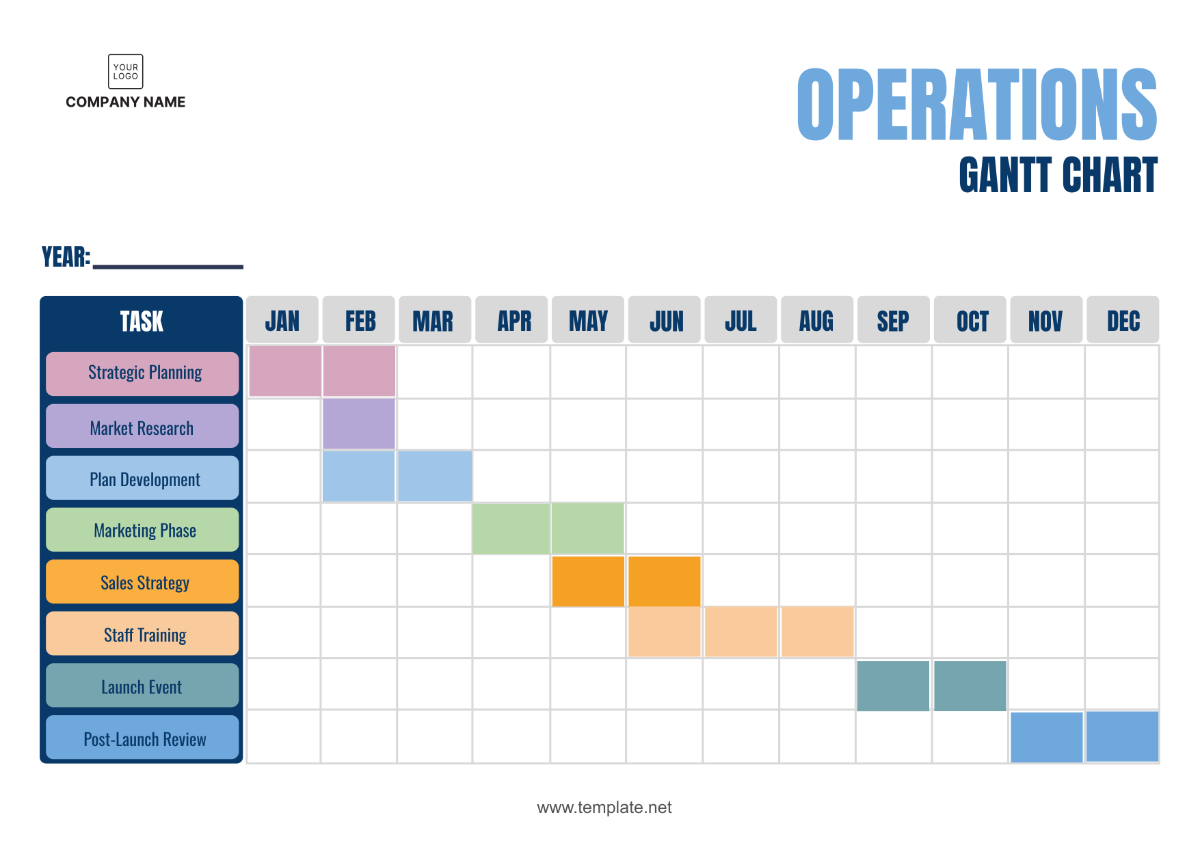Operations Customer Service Workflow Optimization Study
I. Introduction
The customer service department plays a crucial role in maintaining customer satisfaction and loyalty. As such, optimizing the workflow within this department is essential for ensuring efficient and effective service delivery. The purpose of this study is to conduct a comprehensive analysis of the current customer service workflow of [Your Company Name] and identify areas for improvement. By identifying bottlenecks and inefficiencies, we aim to develop strategies to streamline processes and enhance overall performance.
II. Objectives
The objectives of this study are as follows:
Evaluate the current customer service workflow to identify strengths and weaknesses.
Identify bottlenecks and inefficiencies that hinder workflow efficiency.
Conduct root cause analysis to understand the underlying issues contributing to workflow challenges.
Develop strategies and recommendations to optimize the customer service workflow.
Create an implementation plan outlining the steps needed to execute proposed optimization strategies.
Allocate resources effectively to support workflow optimization efforts.
Establish performance metrics to measure the success of implemented changes.
Develop a communication plan to ensure effective dissemination of information regarding workflow optimization initiatives.
Provide training and education to staff members to support the implementation of new workflow processes.
Establish documentation and reporting mechanisms to track progress and identify areas for continuous improvement.
III. Scope of the Study
The study will focus on evaluating the customer service workflow within [Your Company Name]'s customer service department. This includes the processes involved in handling customer inquiries, resolving issues, and providing support across various channels, including phone, email, and live chat. The scope will encompass all stages of the customer service workflow, from initial contact to resolution.
IV. Methodology
A. Research Design:
The methodology employed for this study will be a mixed-methods approach, combining quantitative and qualitative research techniques to obtain a holistic understanding of the customer service workflow optimization needs.
B. Data Collection Methods:
Surveys: A structured survey will be distributed to customer service representatives, supervisors, and customers to gather quantitative feedback on current workflow effectiveness, pain points, and areas for improvement.
Interviews: In-depth interviews will be conducted with key stakeholders, including customer service managers, team leaders, and frontline staff, to gain qualitative insights into operational challenges, bottlenecks, and potential solutions.
Observations: Direct observation of customer service operations will be conducted to understand workflow processes, identify inefficiencies, and validate findings obtained through surveys and interviews.
C. Data Analysis Techniques:
Quantitative Analysis: Survey responses will be analyzed using statistical methods to identify trends, patterns, and correlations in customer service performance metrics, such as response times, customer satisfaction scores, and issue resolution rates.
Qualitative Analysis: Thematic analysis will be applied to interview transcripts and observational notes to identify recurring themes, challenges, and opportunities for workflow optimization.
D. Benchmarking:
Comparison will be made with industry best practices and standards to benchmark [Company Name]'s customer service performance and identify areas where improvement is needed.
E. Validation:
Findings obtained through data collection and analysis will be validated through triangulation, ensuring the reliability and accuracy of the study results.
F. Ethical Considerations:
The study will adhere to ethical principles, ensuring confidentiality of participant information, obtaining informed consent, and protecting sensitive data throughout the research process.
G. Limitations:
Potential limitations of the methodology include:
Availability and willingness of stakeholders to participate
Reliance on self-reported data from surveys and interviews
Time and resource constraints for conducting observations and analysis
V. Current Customer Service Workflow Assessment
A. Process Mapping:
A detailed process map will be created to visualize the current customer service workflow, including all stages from initial contact to resolution. This will provide a clear understanding of the sequence of tasks, handoffs between departments or agents, and decision points within the workflow.
B. Performance Metrics Analysis:
Key performance metrics related to customer service operations will be analyzed to assess the efficiency and effectiveness of the current workflow. This includes metrics such as:
Average response time
First contact resolution rate
Customer satisfaction scores
Call abandonment rates
Service level agreements (SLAs) compliance
C. Customer Feedback Analysis:
Feedback collected from customer surveys, complaints, and other channels will be analyzed to identify common pain points, recurring issues, and areas where the current workflow may be falling short of customer expectations.
D. Employee Feedback and Observations:
Insights gathered from frontline employees through interviews and observations will provide valuable perspectives on the practical challenges and inefficiencies they encounter while executing their tasks within the existing workflow.
E. Technology and Tool Evaluation:
An assessment of the technology platforms and tools used in customer service operations will be conducted to determine their effectiveness in supporting workflow processes. This includes evaluating the usability, functionality, and integration capabilities of customer relationship management (CRM) systems, ticketing systems, and communication channels.
F. Root Cause Identification:
Root cause analysis techniques will be applied to identify the underlying reasons behind any bottlenecks, delays, or inefficiencies observed in the current workflow. This involves tracing problems back to their origin and understanding the contributing factors that lead to workflow disruptions.
G. Documentation Review:
Existing documentation, such as standard operating procedures (SOPs), training materials, and workflow manuals, will be reviewed to assess alignment with actual workflow practices and identify any discrepancies or gaps that may exist.
H. Stakeholder Consultation:
Consultation with key stakeholders, including customer service managers, team leads, and frontline staff, will be conducted to gather insights, validate findings, and ensure a comprehensive understanding of the current workflow from various perspectives.
VI. Identification of Bottlenecks and Inefficiencies
A. Process Bottlenecks:
Analysis of Process Flow: The process map created during the workflow assessment will be analyzed to pinpoint areas where tasks are prone to delays or congestion, indicating potential bottlenecks in the workflow.
Time and Motion Studies: Time and motion studies will be conducted to measure the duration of each step in the workflow and identify tasks that are taking longer than necessary, contributing to overall inefficiencies.
B. Resource Constraints:
Staffing Levels: Assessment of staffing levels compared to workload demands will be conducted to identify instances where insufficient staffing may be causing delays or overburdening employees.
Skills and Training Gaps: Identification of skill or knowledge gaps among employees that hinder their ability to efficiently perform tasks within the workflow.
C. Technology Limitations:
System Downtime: Evaluation of system downtime occurrences and their impact on workflow continuity and productivity.
Software Integration Issues: Identification of challenges related to the integration of different software systems used in the workflow, which may lead to data discrepancies or process interruptions.
D. Communication Breakdowns:
Interdepartmental Communication: Assessment of communication channels and protocols between different departments involved in the workflow to identify instances of miscommunication or delays in information sharing.
Customer Communication: Analysis of communication channels and response times for customer inquiries, complaints, or feedback, identifying areas where communication processes may be lacking or inefficient.
E. Quality Control Failures:
Error Rates: Evaluation of error rates and quality control measures within the workflow to identify tasks or processes where errors frequently occur, leading to rework or customer dissatisfaction.
Compliance Issues: Assessment of compliance with regulatory requirements or internal quality standards, identifying any instances of non-compliance that may pose risks or inefficiencies.
F. Customer Experience Pain Points:
Customer Feedback Analysis: Review of customer feedback and complaints to identify recurring themes or issues that indicate areas of the workflow where customer experience may be compromised.
Service Level Agreement (SLA) Adherence: Examination of SLA adherence metrics to identify instances where service commitments are not being met, indicating potential workflow bottlenecks or inefficiencies.
VII. Root Cause Analysis
Fishbone Diagram:
People: Inadequate training and skill gaps among customer service representatives may lead to longer resolution times.
Process: Complex and outdated procedures for handling customer inquiries and complaints could contribute to workflow inefficiencies.
Technology: Outdated or malfunctioning customer relationship management (CRM) software may hinder efficient tracking and resolution of customer issues.
Environment: Poorly designed workspaces or high noise levels in the customer service area could affect employee productivity and focus.
Management: Lack of clear guidance, supervision, and support from management may lead to inconsistent performance and decision-making among staff.
5 Whys Technique:
Why are resolution times increasing?
Because customer service representatives are spending too much time searching for information.
Why are they spending so much time searching for information?
Because the CRM system is slow and difficult to navigate.
Why is the CRM system slow and difficult to navigate?
Because it is outdated and lacks necessary updates and improvements.
Why hasn't the CRM system been updated?
Because there is no designated budget or resources allocated for system upgrades.
Why hasn't a budget been allocated for system upgrades?
Because senior management prioritizes other initiatives over technology investments.
Pareto Analysis:
The majority of delays in resolving customer inquiries stem from difficulties with the CRM system, indicating a need for prioritized focus on technological improvements.
Data Analysis:
Analysis of customer service metrics reveals a correlation between longer resolution times and specific software glitches within the CRM system.
Stakeholder Consultation:
Feedback from frontline staff highlights frustration with system inefficiencies and the need for better training and support to address customer issues effectively.
Benchmarking and Best Practices Review:
Comparison with industry benchmarks reveals that leading competitors have more streamlined CRM systems and invest significantly in ongoing technology upgrades.
Documentation Review:
Review of SOPs identifies outdated procedures and inconsistencies in handling customer inquiries, suggesting a need for process standardization and documentation updates.
Technology Assessment:
Evaluation of the CRM system reveals compatibility issues with other software tools used by the customer service team, contributing to workflow disruptions.
Environmental Factors Analysis:
Observations of the customer service workspace reveal ergonomic challenges and distractions that may impact staff concentration and productivity.
Management Review:
Interviews with managers uncover a lack of awareness about the extent of system issues and a need for clearer communication and direction in addressing workflow challenges.
VIII. Proposed Workflow Optimization Strategies
Technological Upgrades:
Invest in upgrading the CRM system to a more modern and user-friendly platform with enhanced features such as intuitive navigation, integrated analytics, and automation capabilities.
Implement regular software updates and maintenance to ensure optimal performance and address any existing glitches or compatibility issues.
Explore the integration of additional tools and applications to streamline workflow processes, such as chatbots for automated customer support and ticketing systems for efficient issue tracking.
Process Streamlining:
Conduct a comprehensive review of existing customer service procedures and identify opportunities to simplify and standardize processes.
Implement clear guidelines and protocols for handling different types of customer inquiries and complaints to ensure consistency and efficiency.
Introduce self-service options for routine inquiries, such as online FAQs, knowledge bases, and troubleshooting guides, to reduce reliance on frontline staff for basic support tasks.
Training and Development:
Provide ongoing training and skills development programs for customer service representatives to enhance their product knowledge, communication skills, and problem-solving abilities.
Offer specialized training sessions on the use of new software tools and technologies to ensure staff proficiency and confidence in utilizing the CRM system effectively.
Foster a culture of continuous learning and improvement by encouraging employees to share best practices, participate in cross-functional training sessions, and provide feedback on workflow enhancements.
Workspace Optimization:
Evaluate the physical workspace of the customer service department and make ergonomic improvements to enhance employee comfort and productivity.
Implement noise reduction measures, designated quiet zones, and ergonomic furniture to create a conducive work environment that minimizes distractions and promotes focus.
Utilize digital collaboration tools and project management software to facilitate remote work options and flexible scheduling arrangements for staff, improving work-life balance and job satisfaction.
Management Support and Guidance:
Provide clear direction and leadership from management regarding the importance of customer service excellence and the role of frontline staff in achieving organizational goals.
Foster open communication channels between management and employees to address concerns, provide feedback, and solicit suggestions for workflow improvements.
Recognize and reward exemplary performance among customer service team members to motivate and incentivize continued efforts towards workflow optimization.
Performance Monitoring and Feedback Mechanisms:
Establish key performance indicators (KPIs) and metrics to track the effectiveness of workflow optimization initiatives, such as average resolution times, customer satisfaction scores, and employee engagement levels.
Implement regular performance reviews and feedback sessions to evaluate progress, identify areas for improvement, and recognize individual and team achievements.
Encourage a culture of accountability and transparency by sharing performance data and progress updates with all stakeholders, fostering a shared commitment to continuous improvement and excellence in customer service delivery.
IX. Implementation Plan
A. Technological Upgrades:
Action Steps:
Research and evaluate potential CRM platforms and software solutions.
Select and procure the most suitable CRM system based on identified requirements and budget considerations.
Develop a timeline for implementation, including installation, configuration, data migration, and user training.
Responsible Parties:
IT department (system evaluation and procurement).
Project manager (implementation timeline and coordination).
Training department (user training and onboarding).
B. Process Streamlining:
Action Steps:
Conduct a comprehensive review of current customer service procedures and identify areas for streamlining.
Develop standardized protocols and guidelines for handling common customer inquiries and complaints.
Pilot test new procedures and gather feedback from frontline staff for further refinement.
Responsible Parties:
Customer service management team (procedure review and development).
Quality assurance team (pilot testing and feedback collection).
C. Training and Development:
Action Steps:
Design and develop training programs on product knowledge, communication skills, and CRM system usage.
Schedule training sessions and workshops for all customer service representatives.
Provide ongoing coaching and support to reinforce learning and address individual training needs.
Responsible Parties:
Training department (program development and delivery).
Team leaders and supervisors (coaching and support).
D. Workspace Optimization:
Action Steps:
Conduct a workspace assessment to identify areas for improvement in the physical environment.
Implement ergonomic enhancements and workspace adjustments based on assessment findings.
Communicate changes and provide staff with resources and support to adapt to new workspace arrangements.
Responsible Parties:
Facilities management team (workspace assessment and adjustments).
HR department (communication and support).
E. Management Support and Guidance:
Action Steps:
Hold regular meetings with management to communicate project objectives and expectations.
Provide managers with training and resources to effectively support their teams throughout the implementation process.
Foster a culture of open communication and collaboration between management and frontline staff.
Responsible Parties:
Executive leadership team (project oversight and support).
Human resources department (manager training and support).
F. Performance Monitoring and Feedback Mechanisms:
Action Steps:
Establish key performance indicators (KPIs) and metrics to track the success of implementation efforts.
Implement regular performance reviews and feedback mechanisms to assess progress and identify areas for improvement.
Communicate performance data and progress updates to all stakeholders to maintain transparency and accountability.
Responsible Parties:
Quality assurance team (KPI tracking and analysis).
Project manager (communication and reporting).
G. Timeline:
The following table outlines the timeline for the implementation plan of the proposed workflow optimization strategies for the Operations Customer Service Workflow Optimization Study. Each milestone specifies the start and end dates, along with the responsible party or department overseeing its completion. This structured timeline aims to facilitate efficient execution and monitoring of the implementation process.
Milestone | Start Date | End Date | Responsible Party |
|---|---|---|---|
Conduct CRM system evaluation | 2024-03-01 | 2024-03-15 | IT department |
XV. Conclusion
In conclusion, the Operations Customer Service Workflow Optimization Study aims to enhance the efficiency and effectiveness of [Your Company Name]'s customer service operations. By conducting a thorough analysis of the current workflow, identifying areas for improvement, and implementing targeted optimization strategies, we seek to deliver a superior customer experience while maximizing operational efficiency. Through ongoing monitoring, evaluation, and continuous improvement efforts, we are committed to achieving and maintaining excellence in customer service delivery.















































